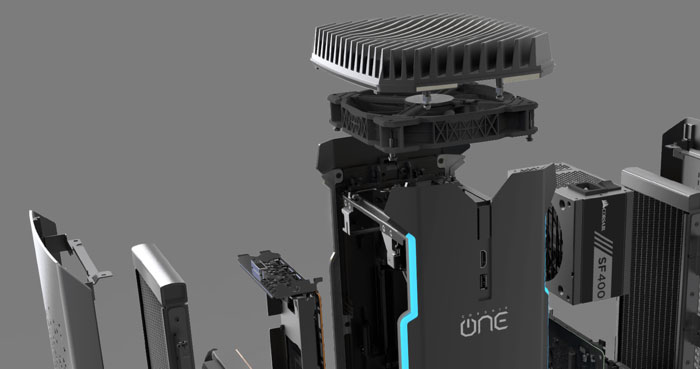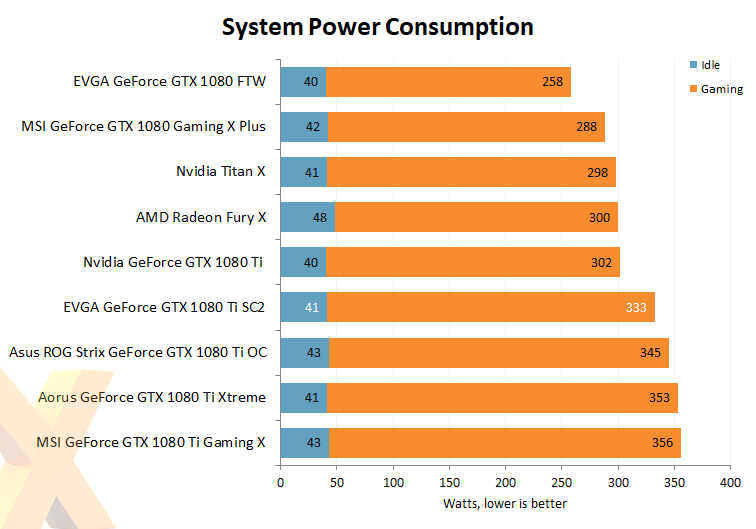Corsair first teased the Corsair ONE "category defying PC system" back in Feb, then we had one in the HEXUS labs the following month. At the time of release there were four SKUs with some being Corsair webstore exclusives. We concluded that the Corsair ONE was a tidy, compact system well suited to QHD gaming (our review was of the GTX 1080 model) but wished for the extra oomph provided by a fast M.2 SSD.

Now Corsair has updated its range and is offering three versions of its Corsair ONE Pro system with updated specs and capabilities. The new configurations have mostly addressed our review criticisms, making this an even more attractive turnkey PC solution, at a price.
Specifications for new Corsair ONE configurations
|
|
CORSAIR ONE PRO |
CORSAIR ONE PRO |
CORSAIR ONE PRO |
|
Chassis |
Black, VR Ready |
Black, VR Ready |
Black, VR Ready |
|
CPU |
Intel i7-7700K Liquid Cooled |
Intel i7-7700K Liquid Cooled |
Intel i7-7700K Liquid Cooled |
|
GPU |
NVIDIA GTX 1080 Liquid Cooled |
NVIDIA GTX 1080 Ti Liquid Cooled |
NVIDIA GTX 1080 Ti Liquid Cooled |
|
DRAM |
16GB 2,400MHZ DDR4 |
16GB 2,400MHZ DDR4 |
32GB 2,400MHZ DDR4 |
|
Storage |
480GB m.2 NVMe SSD, 2TB HDD |
480GB m.2 NVMe SSD, 2TB HDD |
480GB m.2 NVMe SSD, 2TB HDD |
|
Motherboard |
Z270 |
Z270 |
Z270 |
|
PSU |
400W SFX, 80 PLUS Gold |
500W SFX, 80 PLUS Gold |
500W SFX, 80 PLUS Gold |
|
OS |
Windows 10 Home |
Windows 10 Home |
Windows 10 Home |
|
MSRP |
$2,299 Exc. TAX / £2,199 inc VAT |
$2,699 Exc. TAX / £2,599 inc VAT |
$2,899 Exc. TAX / £2,719 inc VAT |
You can see all the new model configurations above. Some specs remain the same as previous, but the range has benefitted from a subtle but meaningful improvement in some key aspects. Models sporting GeForce GTX 1080 Ti graphics cards are now more easily available. Last time the model packing this card was a Corsair.com exclusive, this time the top spec model is again such an exclusive but the second model down, with the same GPU, isn't.
Previously the highest capacity RAM you could configure was 16GB. Above you can see that you can now buy a Corsair ONE Pro system with 32GB 2,400MHz Venegance LPX DDR4 installed. Storage is more evenly upgraded throughout the range. All systems now come with a 480GB M.2 NVMe SSD and 2TB HDD storage combo but earlier in the year there was a mish-mash of options limited to SATA SSD and HDD combinations.

The compact system retains the unique dual-loop convection cooling, with the GeForce GTX 1080 Ti in the Corsair ONE Pro boosting clock speeds "to 100MHz faster than an equivalent air-cooled GPU, all while running at temperatures close to 30°C cooler". GTX 1080 Ti equipped models get an upgraded 500W PSU.
Corsair says these updated PC systems are immediately available in North America, Europe and Australia from authorised dealers, and direct from the Corsair webstore.














